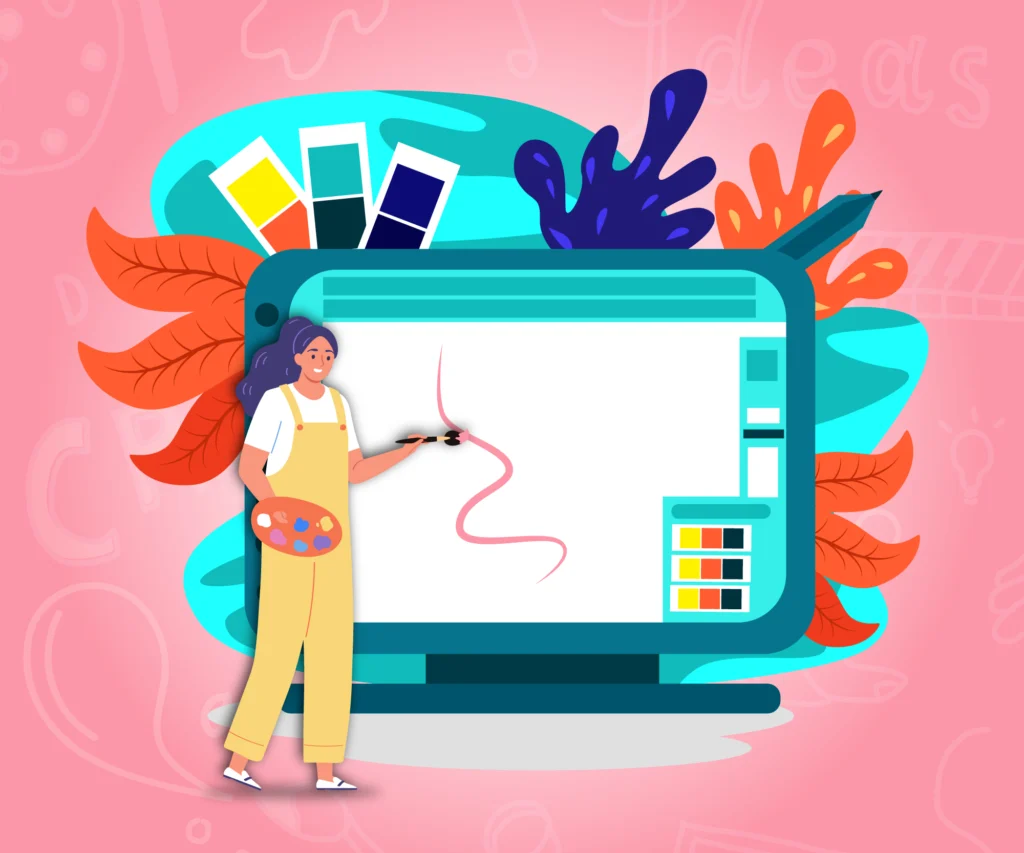Nowadays, art and technology go hand-in-hand. Witnessing how the creative digital space constantly evolves with new tools and software to help creatives and artists thrive has been revolutionary. We have come a long way since the discovery of the printing press in the 15th century. In the 21st century, with powerful tools like the internet and social media, artists can instantly reach millions of people worldwide. As a result, the concept of freedom of expression got a whole different level of meaning. Today, anyone on social media channels can consume, create, and share art, strengthening creativity in the digital age.
While all these things kept changing around us, have we been able to sit back and reflect upon everything? How did art become gradually intertwined with technology? From cutting-edge creative techniques to artificial intelligence streamlining digital art, let’s dig deeper into how the collaboration of art and technology happened and how women are making their presence felt.
Creativity in the digital age
Despite the hype, the digitalisation of the world also has its fair share of controversy. Many have argued that the craze of mechanising nearly every aspect of our lives is ruining the ‘human’ element altogether. But there is a counter-argument that the very need for constant come-up is what makes us human in the first place.
Let’s talk about DALL-E 2, another ground-breaking example of OpenAI’s artificial intelligence model. This language model is capable of generating high-quality images from textual descriptions. The model, introduced in January 2021, is the successor to the original DALL-E model, capable of rendering images from textual input but with lower resolution and less complexity.
Stable Diffusion is another OpenAI model that can produce high-quality images and other data types, such as audio, text, and molecular structures.
Understanding the dynamics between technology and art
Let us forget the concerns regarding the personal, human touch in art and remember the purpose of technology for once. After all, it has always been about uplifting the human experience.
Technology has opened up many brand-new possibilities for artists and creatives. Apart from the colossal exposure artists receive (which wasn’t possible before), how can we ignore the interactive aspects of 3D art and virtual reality?
Sexism in the art world
Let’s move on to the sexism we notice in the art niche. Have you ever seen how most high-profile art exhibitions showcase more work by men than by women? 87% of the artwork on display in American museums is by male artists; in Canberra alone, this percentage is 73%.
This gender discrimination is also visible in the pricing factor. A woman’s most expensive creation doesn’t even secure a place in the top 100 expensive art in the world. However, the digitalisation of art also opened new doors for women. Let’s look at how.
How women are advancing creativity in the digital age
If famous women artists and entrepreneurs worldwide are the subject of discussion, one cannot skip past Tracy Lee Stum. Her large-scale, three-dimensional chalk art and street paintings are iconic in the art community. Stum has won numerous awards and is one of the top street painters in the world.
She established TiLT, a brand under Inspire Artfulness Inc., as her first art gallery. This museum aimed to provide visitors with an interactive illusion and a 3D art experience.
Jordan Huelskamp established Salon, one of the most well-known websites for digital art. It is the first decentralised art fund ever established. Additionally, Salon is the most extensive co-owned art collection in the world that features the creations of female artists from around the globe. Huelskamp has cleverly developed a user-friendly, group-based approach to funding and managing an art museum’s collection. A vote among the Salon members decides which pieces should be purchased. Additionally, rather than being kept in secure storage or a museum, those works are displayed for visitors to see in members’ homes.
Yam Karkai is an Israeli illustrator and graphic designer. She is known for her colourful and imaginative illustrations, often featuring animals, nature, and other whimsical themes. Her collection includes a series of 10,000 diverse female avatars that she created, prompting celebrities such as Reese Witherspoon, Shonda Rhimes, Eva Longoria, and Huda Kattan to join the women-centric virtual community.
Within two weeks of its release, World of Warcraft’s 2022 collection earned Yam Karkai $40 million. Her OpenSea platform has 5,100 users, and the total Ethereum traded is nearly $125 million.
Female artists at the forefront of creativity in the digital age
There has been a growing movement to support and promote female artists in recent years. As a result, women are getting more recognition for their contributions to the art world. In addition, they have more opportunities to showcase their work in major galleries and museums worldwide.
Several factors, including the rise of feminist and social justice movements, greater awareness of the need for diversity and inclusivity, and the growing influence of female curators and collectors, are driving this shift.
Consequently, the art world is experiencing a new era of creativity in the digital age, with female artists at the forefront of this movement. They bring new perspectives and voices to the art world, challenge traditional ideas, and push the boundaries of what is possible.
Overall, the emergence of a new era of art with female artists at the forefront represents a positive and exciting development for the art world and society as a whole. It is an opportunity to celebrate all artists’ diversity and creativity, regardless of gender. Let’s usher in a new era of creativity in the digital age with women at the forefront!

